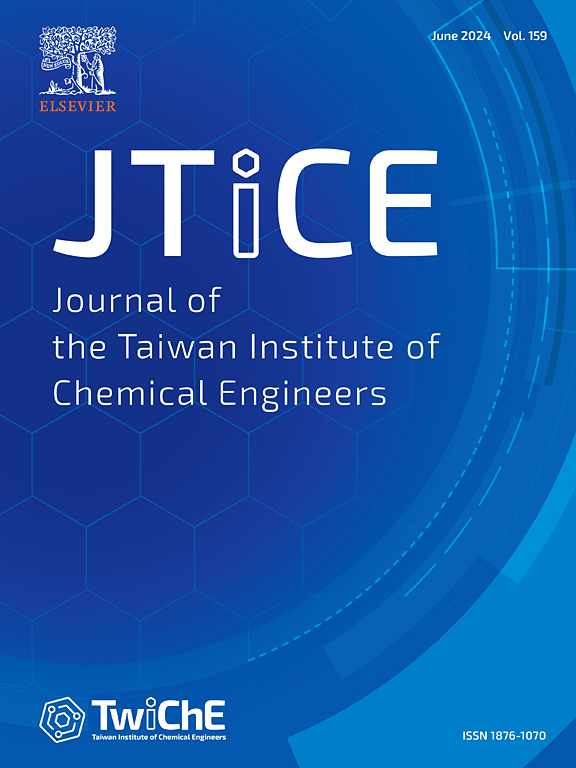Transition metal promoted palladium-catalyzed oxidative carbonylation of phenol to diphenyl carbonate
IF 5.5
3区 工程技术
Q1 ENGINEERING, CHEMICAL
Journal of the Taiwan Institute of Chemical Engineers
Pub Date : 2025-01-04
DOI:10.1016/j.jtice.2024.105942
引用次数: 0
Abstract
Background
One-step synthesis of diphenylcarbonate (DPC) via the oxidative carbonylation of phenol can significantly improve the sustainability of polycarbonate manufacturing and aid economic potential for CO2 utilization when coupled with the reverse water gas shift reaction. This work aims to develop active Pd-based solid catalyst by incorporating five transition metal oxide promoters individually. The impact of the transition metal oxides to the performance and stability for DPC synthesis were systematically studied.
Method
The oxidative carbonylation of phenol to synthesize diphenyl carbonate (DPC) is conducted in a high-pressure batch reactor using supported palladium catalysts. The promoted catalysts were prepared by co-precipitating Pd and the transition metal hydroxide onto the Pb-OMS-2 catalyst support followed by thermal treatment in air. Detailed materials characterization including diffraction, spectroscopic, chemisorption, and elemental analysis was implemented to aid the understanding of structure-property relations.
Significant findings
The yield of DPC exhibited a sigmoidal growth over time due to the accumulation of leached metal ions which served as promoting co-catalysts expediting the oxidative carbonylation reaction. The stability of Pd catalyst against leaching was enhanced by the incorporated transition metals with iron and nickel being most effective in the long run.

求助全文
约1分钟内获得全文
求助全文
来源期刊
CiteScore
9.10
自引率
14.00%
发文量
362
审稿时长
35 days
期刊介绍:
Journal of the Taiwan Institute of Chemical Engineers (formerly known as Journal of the Chinese Institute of Chemical Engineers) publishes original works, from fundamental principles to practical applications, in the broad field of chemical engineering with special focus on three aspects: Chemical and Biomolecular Science and Technology, Energy and Environmental Science and Technology, and Materials Science and Technology. Authors should choose for their manuscript an appropriate aspect section and a few related classifications when submitting to the journal online.

 求助内容:
求助内容: 应助结果提醒方式:
应助结果提醒方式:


